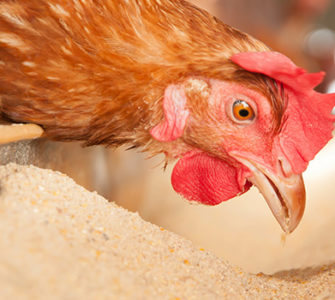Reality check: 87% of antibiotics used in animals rarely used in human medicine
Perception
Antibiotic use in livestock animals is contributing to human antibiotic resistance.
Reality
The Centers for Disease Control and Prevention (CDC) reports that antibiotic resistance kills 65,000 people a year and costs $4 billion to $5 billion annually. Some consumer groups and news reports have tried linking this problem to antibiotic use in poultry and livestock, but there is little evidence to support this link.
Of the seven bacterial pathogens deemed by the Infectious Disease Society of America to pose the greatest resistance problems in humans, not one is foodborne, nor are any linked to animal contact or antibiotic use. In fact, most do not affect animals at all. Only Pseudomonas aeruginosa, a fluoroquinolone-resistant hospital pathogen, has been known very rarely to cause mastitis in dairy cows, but fluoroquinolones have never been approved for use in lactating cattle.1
Furthermore, 87% of antibiotics used in animals are either never, or almost never, used in human medicine. According to the 2011 FDA report on animal drug use, 45% of all antibiotics used in animals are not approved for human use. Another 42% are tetracyclines, which are used only rarely to treat a limited range of human infections.2 Although the link between antibiotic use in animals and resistance in humans is currently very weak, multiple measures are in place to keep it that way.
Prior to obtaining required FDA approval, all antibiotics used in animals must demonstrate safety, efficacy and low risk of contributing to antibiotic resistance.
Once approved, all antibiotics are subject to oversight by the FDA, CDC and USDA. FDA, animal-health companies and third-party researchers also regularly conduct risk assessments and publish the results.
In addition, judicious-use programs developed by government, veterinary and industry organizations offer species-specific guidelines to ensure the safe and prudent use of antibiotics in animals, especially ones that are critical to human health. These programs are designed not only to limit resistance but also to keep antibiotics safe and effective for humans and animals alike, thereby contributing to a healthy food supply and a healthy population.
For more information on judicious-use programs in the poultry industry, search on your browser for FDA’s “Judicious Use of Antimicrobials for Poultry Veterinarians,” or the American Association of Avian Pathologists’ “Guidelines to Judicious Therapeutic Use of Antimicrobials in Poultry.”
1 http://www.fda.gov/animalVeterinary/newsevents/CVMupdates/ucm348794.htm
Posted on June 2, 2014
















